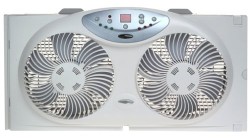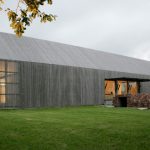
With one side taking the air in and the other doing the opposite, better air quality or aeration can be achieved especially in more humid conditions.
There are many good reasons why window exhaust fans should be used around the house. At the top of the list is the energy savings. For example, the amount of power that a regular air conditioning (AC) unit consumes averages to about eight times that of a fan. However, switching may not be possible for just about any household. This is because these ventilators work best in an environment where it is warm during the day, and cool and dry come nighttime.
Excessively humid conditions do no augur well for these fans. The air can get sticky and with continued use, machine lifespan may be negatively impacted. What makes these fans unique is the versatility for intake and outtake airflow. However, because there is only one set of blades inside, these machines cannot multitask. One solution is to get a twin version, such as the popular Bionaire window fan that comes equipped with dual fan blades. With one side taking the air in and the other doing the opposite, better air quality or aeration can be achieved especially in more humid conditions.
The idea behind these fans is to take the air in when desirable in order to cool the home interior. To expel heat, fumes, and other kitchen effluents, the outtake function is activated instead. This is what makes such an appliance very popular in the kitchen area.
In neighborhoods, not subject to extreme weather or temperature conditions, the window exhaust fan can do wonders beyond the kitchen in order to achieve almost AC-quality ventilation. Barring the twin model, two separate fans can be set up, one at a side of the house which is preferably shaded and where more wind blows; and the other, on the warmer side of the home.
By switching flow modes in such a way as the cool current is sucked in while the hot one is being continuously expelled, a very comfortable temperature may be realized. For two-story dwellings, a window fan can be deployed on the first floor to take in the cooler air from the outside; then, another fan can be set up on the outflow mode on the top floor. For best results, keep a door or doors open between the two floors to allow air science to take its natural course.
In summary, window exhaust fans are a viable AC alternative in homes not subject to extreme temperatures or humidity. With the average price of an exhaust fan below the $100 mark, and the fact that when turned on it only uses a fraction of the electricity that air conditioning consumes, great savings may be realized. By harnessing the principle of the hot air balloon and with a little ingenuity, fresh and free-flowing ventilation is within reach.
















